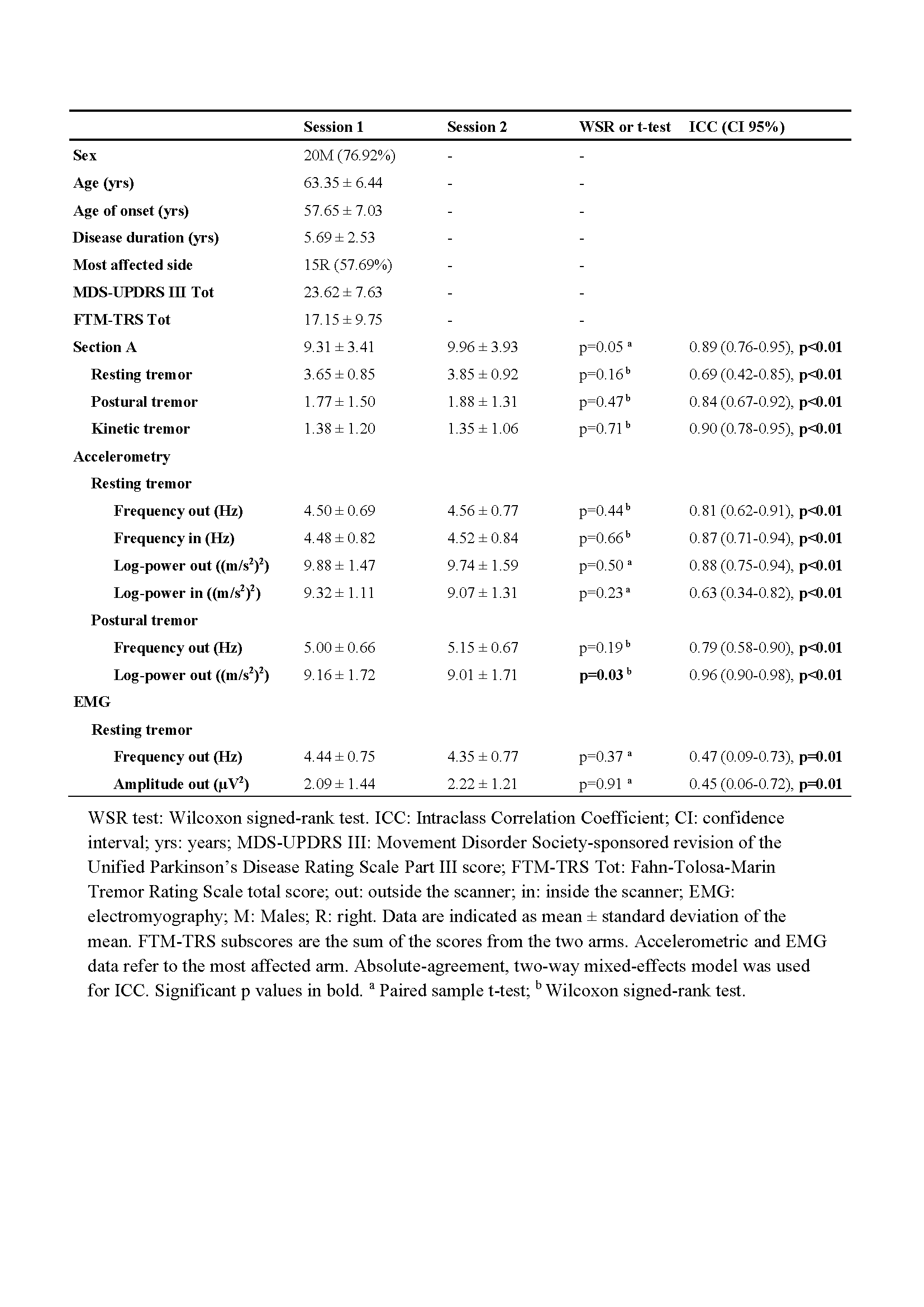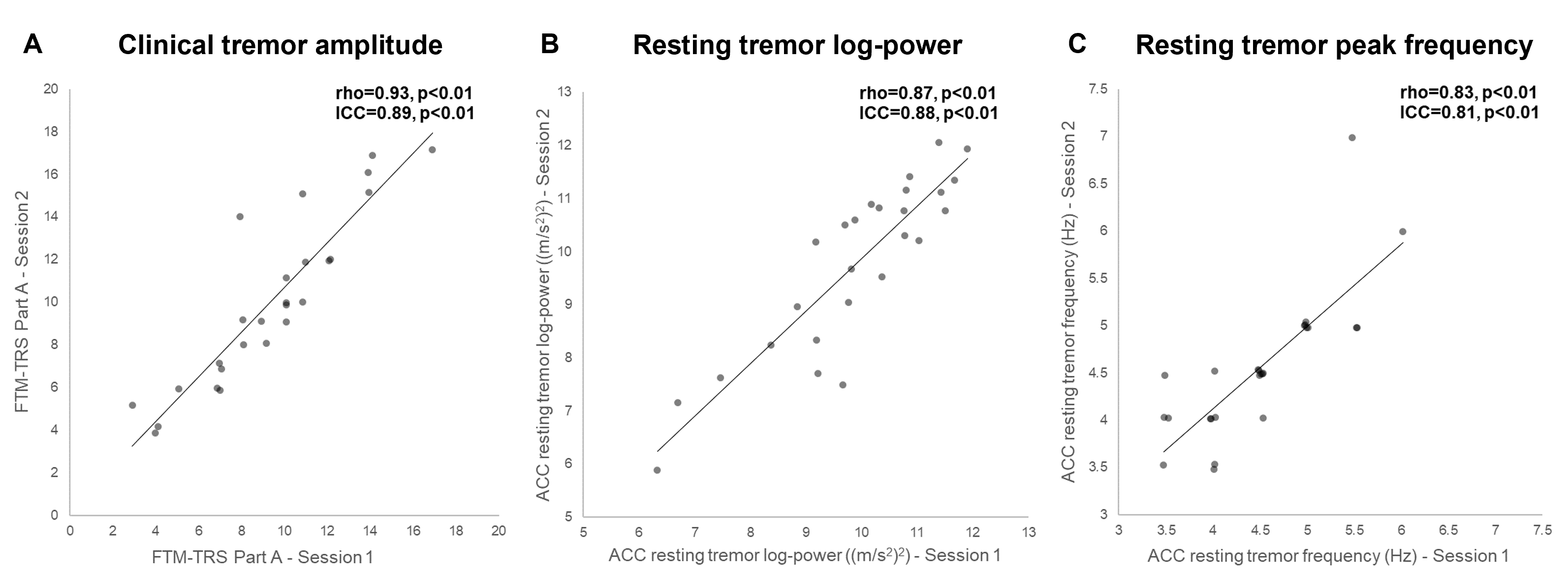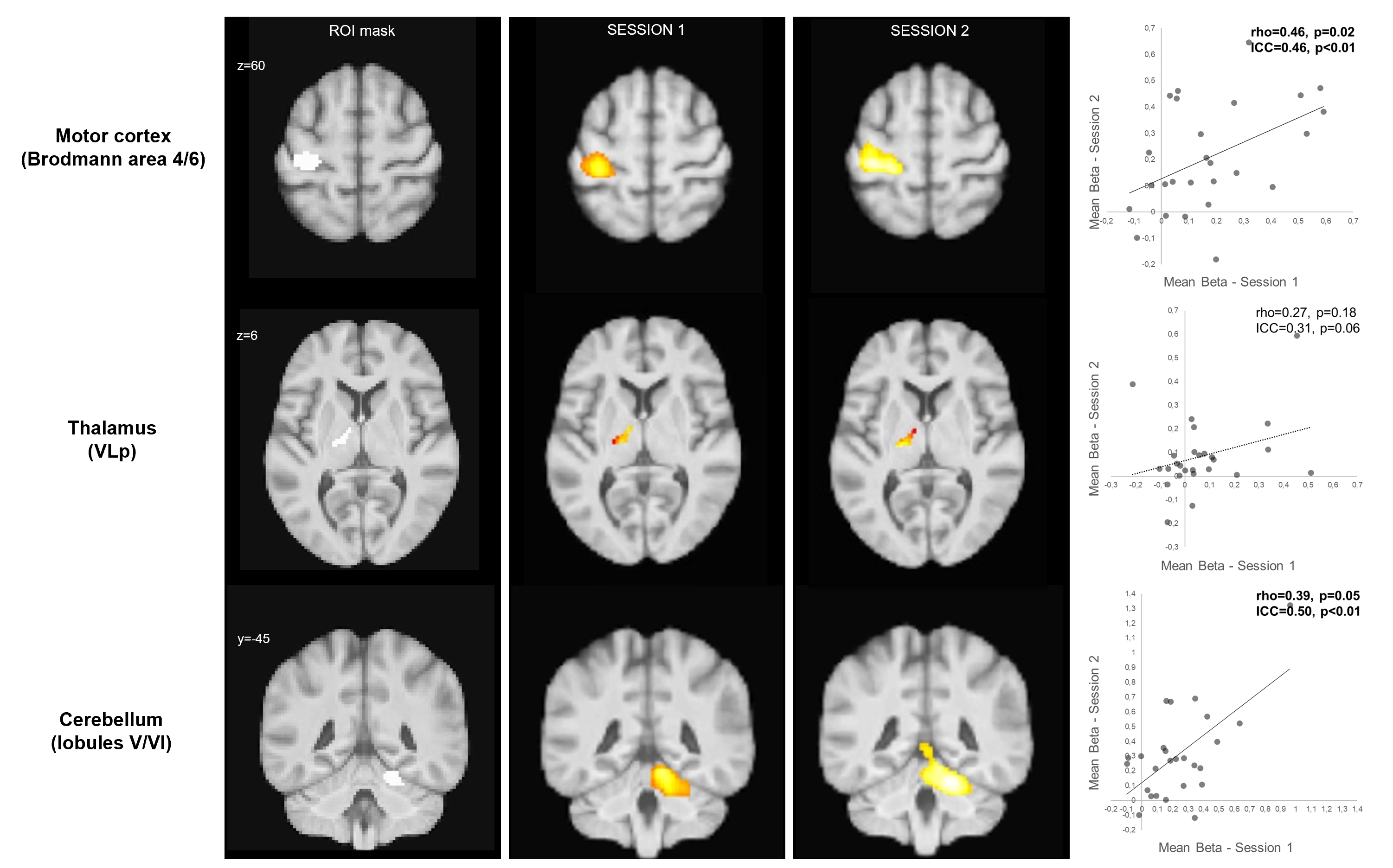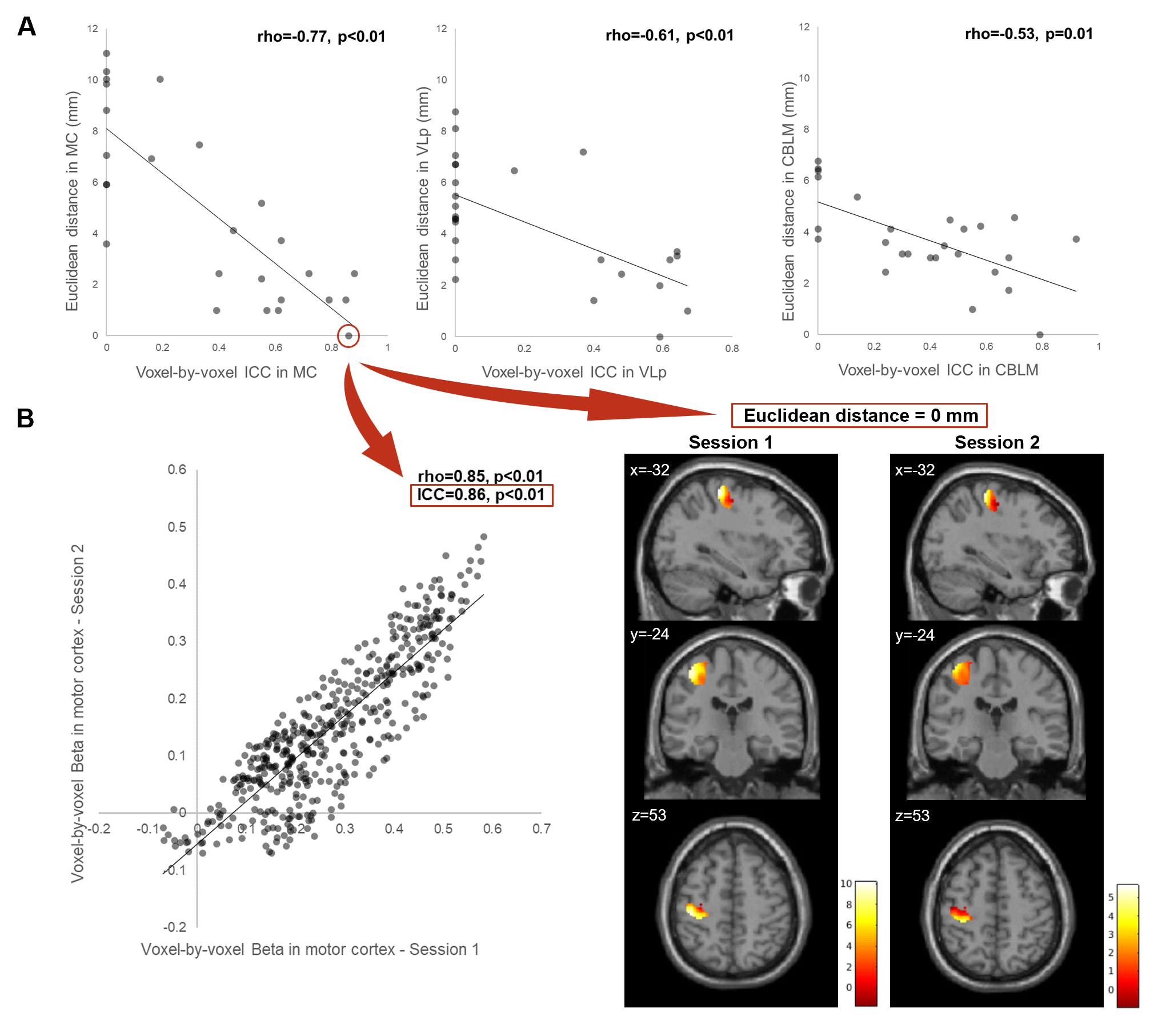Category: Tremor
Objective: We aim to assess the stability and intra-individual reliability of clinical, neurophysiological and neuroimaging Parkinson’s Disease (PD) tremor parameters.
Background: The cerebello-thalamo-cortical circuit (CTC) and basal ganglia play a key role in pathophysiology of tremor in PD. Better understanding the underlying mechanisms is crucial for advancing treatment strategies.
Method: We evaluated 26 tremor-dominant PD patients OFF medication in two sessions two months apart. Evaluations included standardized clinical scales, quantitative analysis of tremor using accelerometry and electromyography (EMG), and concurrent accelerometry-fMRI scan to detect resting tremor-related brain activity. Both group and individual level analyses were conducted.
Results: At group level, clinical (Fahn-Tolosa-Marin Tremor Rating Scale – FTM-TRS) and accelerometric (ACC) data did not change across sessions, and showed good to excellent reliability for resting and postural tremor [table1] [figure1]. Significant tremor-related activity was observed in the three nodes of CTC (all p<0.05) [figure2]. A positive correlation across sessions was also observed for the mean tremor-related activity in motor cortex (MC) and cerebellum (CBLM) [figure2]. At individual level, the distribution of tremor-related activity evaluated voxel-by-voxel correlated significantly across sessions in 65.38%, 46.15%, and 76.92% of patients for MC, thalamus (VLpv) and CBLM respectively (all p<0.01). As expected, subjects with higher reliability of the activity pattern in CTC showed lower distance between activity peaks across sessions in each ROI (all p<0.01) [Figure3A]. MC data of an example subject is shown in Figure3B. Finally, higher intra-individual reliability of the activity pattern in MC was associated with smaller changes in resting tremor amplitude across sessions (rho=-0.54, p<0.01).
Conclusion: Our study confirms the role of CTC in PD tremor pathophysiology and demonstrates the stability of its involvement over time. Neurophysiological and functional neuroimaging measures proved to be reliable in investigating mechanisms underlying PD tremor. These findings support personalized treatments and targeted neuromodulation, advancing PD tremor management.
The data in this abstract have been accepted for presentation at the EAN 2024 Congress in Helsinki.
Table1
Figure1
Figure2
Figure3
To cite this abstract in AMA style:
L. Angelini, KRE. Berg, MF. Dirkx, M. Bologna, BR. Bloem, RCG. Helmich (Pozzilli. Reliability of neurophysiological and cerebral tremor features in Parkinson’s disease [abstract]. Mov Disord. 2024; 39 (suppl 1). https://www.mdsabstracts.org/abstract/reliability-of-neurophysiological-and-cerebral-tremor-features-in-parkinsons-disease/. Accessed December 2, 2025.« Back to 2024 International Congress
MDS Abstracts - https://www.mdsabstracts.org/abstract/reliability-of-neurophysiological-and-cerebral-tremor-features-in-parkinsons-disease/




